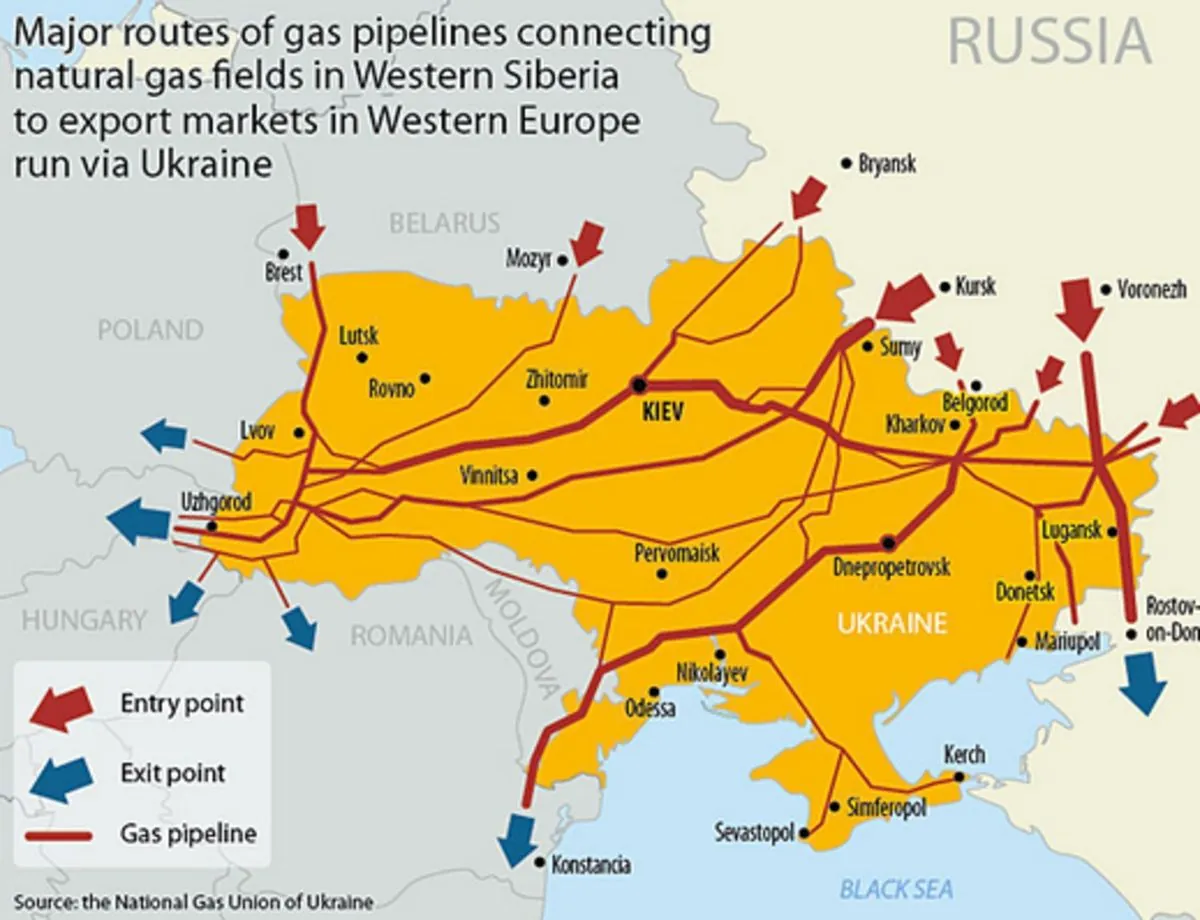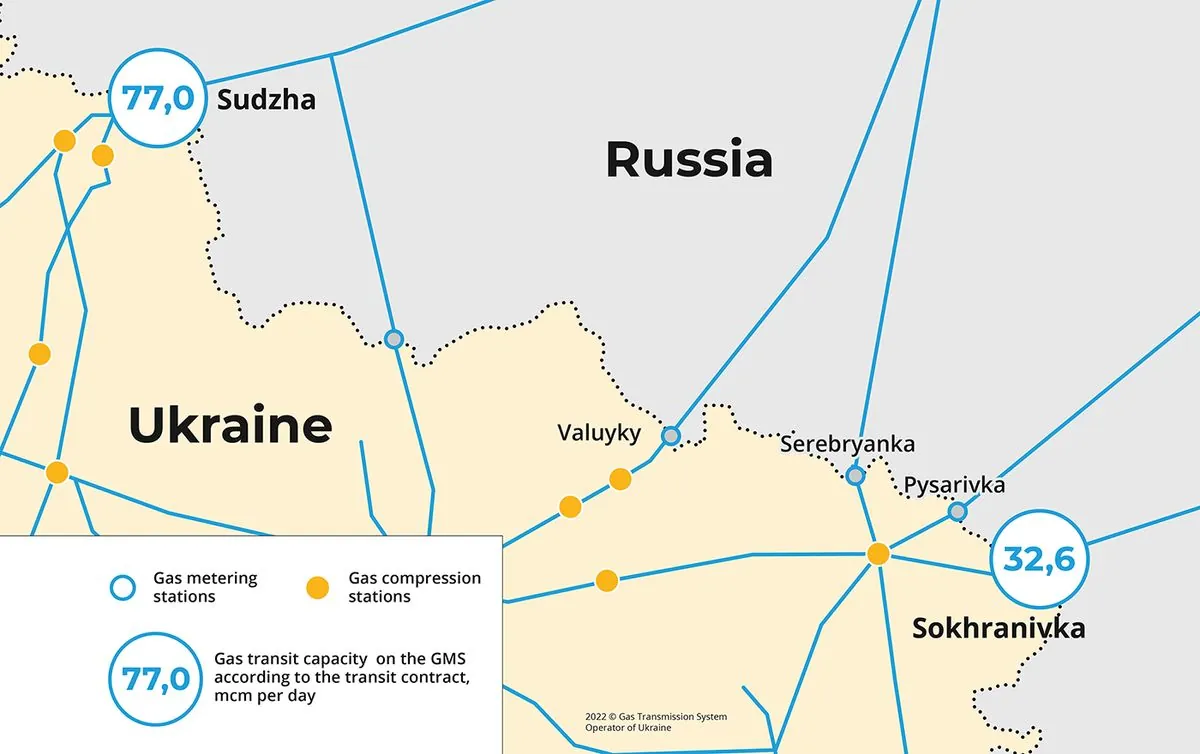Russian Gas Flows Through Ukraine Despite War and Sanctions
Russian natural gas continues to transit through Ukraine to Europe, despite ongoing conflict. The EU aims to end Russian fossil fuel imports by 2027, but progress varies among member states.

The ongoing conflict between Russia and Ukraine has not halted the flow of Russian natural gas through Ukrainian pipelines to European consumers. This unexpected continuity persists despite over two years of hostilities and multiple rounds of sanctions.
Ukraine's gas transmission system, particularly the Sudzha measuring station near the Russian border, remains operational. On a typical day, approximately 42.4 million cubic meters of gas pass through this station, consistent with the average flow over the past month.
The gas originates from West Siberian fields and travels through pipelines that cross the Ukrainian border. It then enters the European Union at the Ukraine-Slovakia border, supplying utilities in Austria, Slovakia, and Hungary. These countries rely on this natural gas for electricity generation, industrial processes, and in some cases, home heating.

A five-year transit agreement between Ukraine and Russia, set to expire at the end of 2024, underpins this arrangement. Under this deal, Russia commits to sending specific volumes of gas through Ukraine's pipeline system to Europe, with Gazprom profiting from gas sales and Ukraine collecting transit fees.
German Galushchenko, Ukraine's energy minister, has stated that Ukraine does not intend to extend or replace this agreement after its expiration.
Prior to the conflict, Russia supplied approximately 40% of Europe's natural gas through four major pipeline systems. However, following the invasion, Russia significantly reduced supplies through the Baltic and Belarus-Poland pipelines, citing payment disputes. The Baltic pipeline was later sabotaged, though the details of this incident remain unclear.
The Russian supply reduction triggered an energy crisis in Europe. Germany, for instance, invested heavily in floating terminals to import liquefied natural gas (LNG). Users across the continent reduced consumption as prices soared. Norway and the United States stepped in to fill the gap, becoming Europe's two largest gas suppliers.
Europe views the Russian cutoff as energy blackmail and has outlined plans to completely eliminate Russian gas imports by 2027. However, Russian gas was never officially banned, highlighting Europe's historical dependence on Russian energy.
Currently, about 3% of Europe's gas imports flow through the Sudzha station, part of the roughly 15% of imports that came from Russia last year. While this percentage may seem small, it remains significant for countries like Austria, Slovakia, and Hungary, which would need to arrange alternative supplies if this flow were disrupted.
The European Union's progress towards ending Russian fossil fuel imports has been uneven. Some countries, like Austria, have actually increased their reliance on Russian gas, with imports rising from 80% to 98% over the past two years. Others, like Italy, have reduced direct imports but still receive Russian-origin gas through intermediaries.
[[Armida van Rijd, senior research fellow at the Royal Institute of International Affairs in London]]
"Russian gas is being laundered through Azerbaijan and Turkey to meet continued high European demands."
Van Rijd acknowledges that European efforts to reduce Russian gas usage are "impressive" so far. However, she notes that "the political reality is that it is extremely difficult for European countries to fully diversify their energy supplies, when many are already struggling with high inflation and a cost-of-living crisis."
As Europe continues to navigate this complex energy landscape, the future of Russian gas flows remains uncertain. The continent's ability to balance energy security, economic concerns, and geopolitical considerations will likely shape its energy policies in the coming years.


































